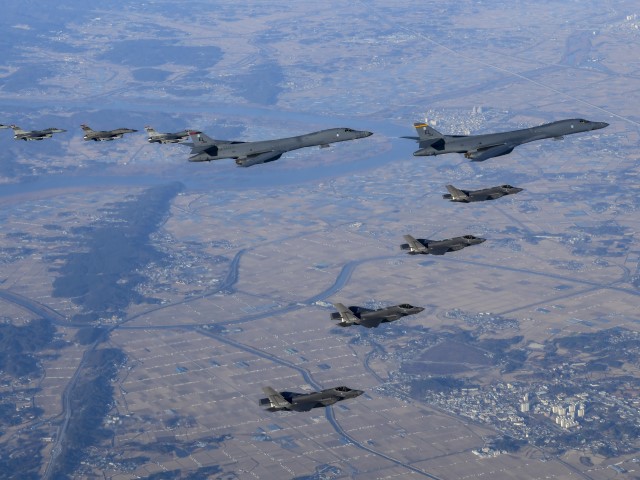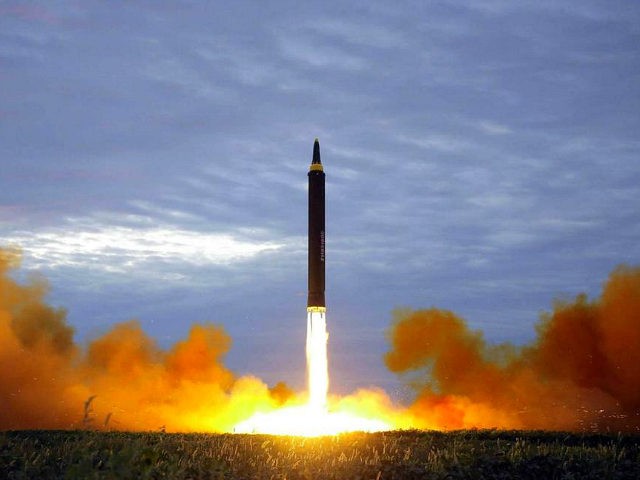North Korea launched at least one ballistic missile in the direction of Japan on Wednesday, drawing a formal protest lodged by Japan via China.
Japanese Defense Minister Hamada Yasukazu said the North Korean missile reached a peak altitude of about 31 miles and flew about 180 miles toward the Sea of Japan before crashing into the sea.
“The relatively low trajectory seemed to align with the flight characteristics of some of North Korea’s newer short-range weapons designed to evade missile defenses,” the Associated Press observed.
Hamada said the missile came down outside of Japan’s exclusive economic zone, but the Japanese government still used its diplomatic offices in China to file a “stern complaint,” as Chief Cabinet Secretary Matsuno Hirokazu put it.
“North Korea’s actions, including its repeated missile launches, threaten the peace and security of our region and the international community, and are absolutely unacceptable,” Matsuno said.
The South Korean military said the weapon was a short-range ballistic missile (SRBM) launched from Sukchon in North Korea’s western Pyongan province. According to the South Koreans, the missile was only in the air for a few minutes before it crashed.
North Korea has launched over 30 similar missiles over the past week, plus at least one intercontinental ballistic missile (ICBM), which appeared to be headed into Japanese airspace before it suffered a technical failure. Pyongyang stated the flurry of missiles was a response to joint U.S.-South Korean air force drills, which it denounced as provocative. Many analysts believe North Korea is also acting in a belligerent and intimidating manner because it is gearing up to resume nuclear weapons tests.

In this photo provided by South Korean Defense Ministry, two U.S. Air Force B-1B bombers, top center, four South Korean Air Force F-35 fighter jets, and four US Air Force F-16 fighter jets fly over South Korea Peninsula during a joint air drill called “Vigilant Storm,” in South Korea, Saturday, Nov. 5, 2022. (South Korean Defense Ministry via AP)
Also on Wednesday, a South Korean Navy ship was able to recover a ten-foot section of debris from a previous North Korean missile launch, using an underwater probe. The missile in question threatened South Korea’s Ulleung Island during North Korea’s spate of launches last week, driving residents into air-raid shelters.
South Korea identified the weapon as a Soviet-era SA-5 surface-to-air missile, a system initially deployed in the mid-1960s and commonly provided to client states of the Soviet Union. Some analysts refer to the missile as the S-200, the designation originally used by the Soviets.
North Korea is one of a dozen countries believed to maintain operational SA-5 launchers to this day. According to the South Korean Defense Ministry, Russia is also still using SA-5s to attack ground targets in Ukraine.
Although initially intended to shoot down U.S. bombers and surveillance aircraft, versions of the SA-5 that could carry nuclear warheads were produced.

COMMENTS
Please let us know if you're having issues with commenting.